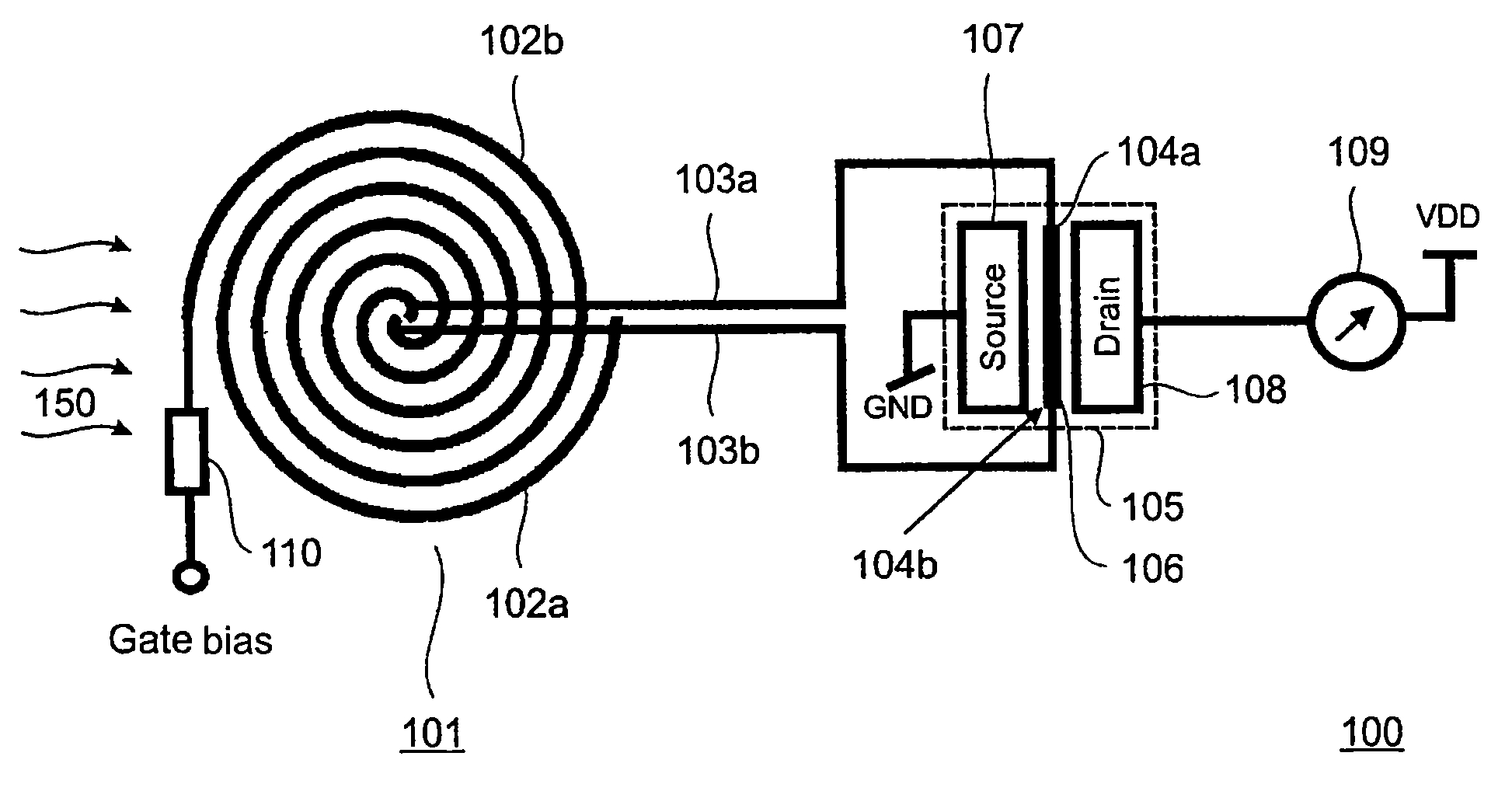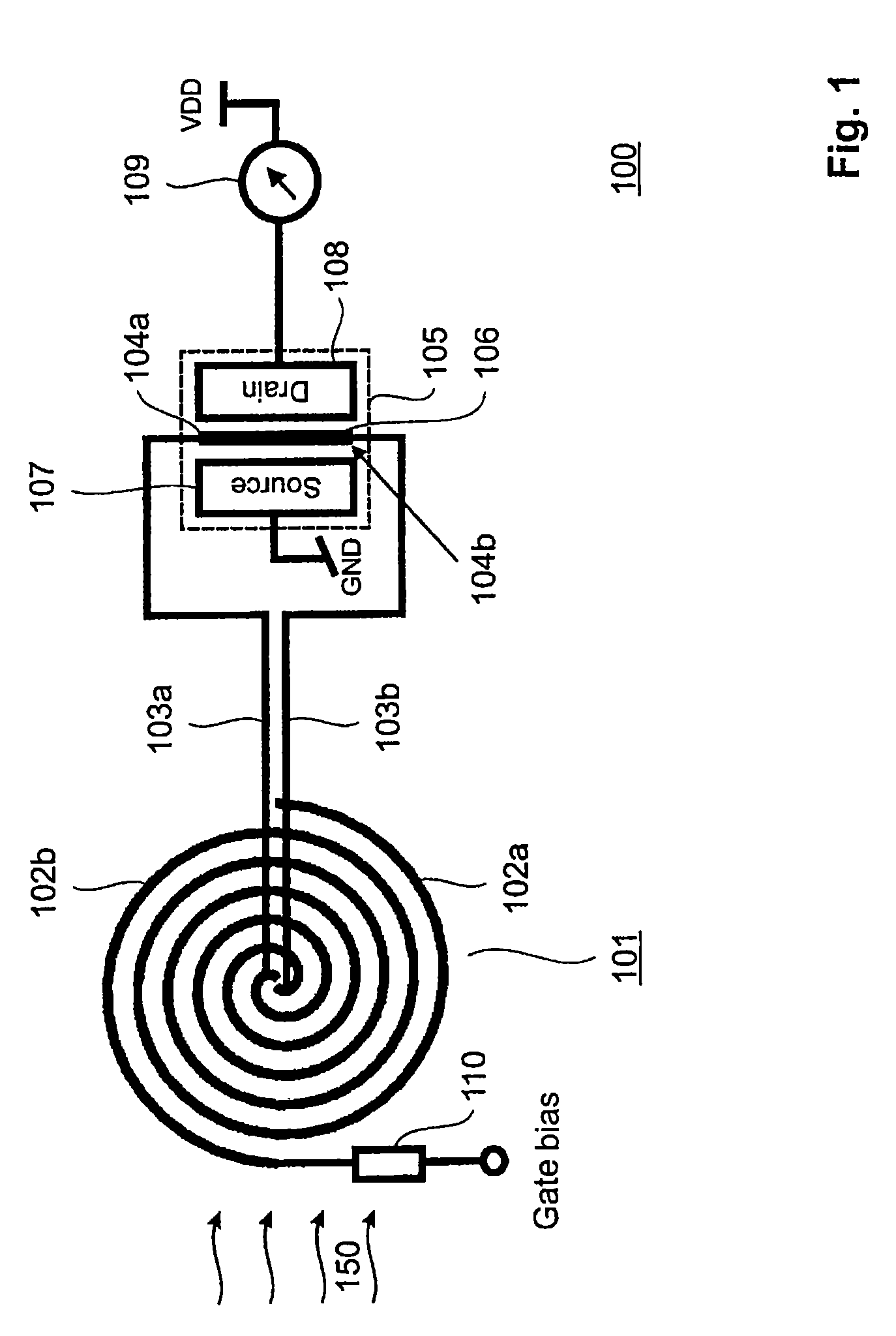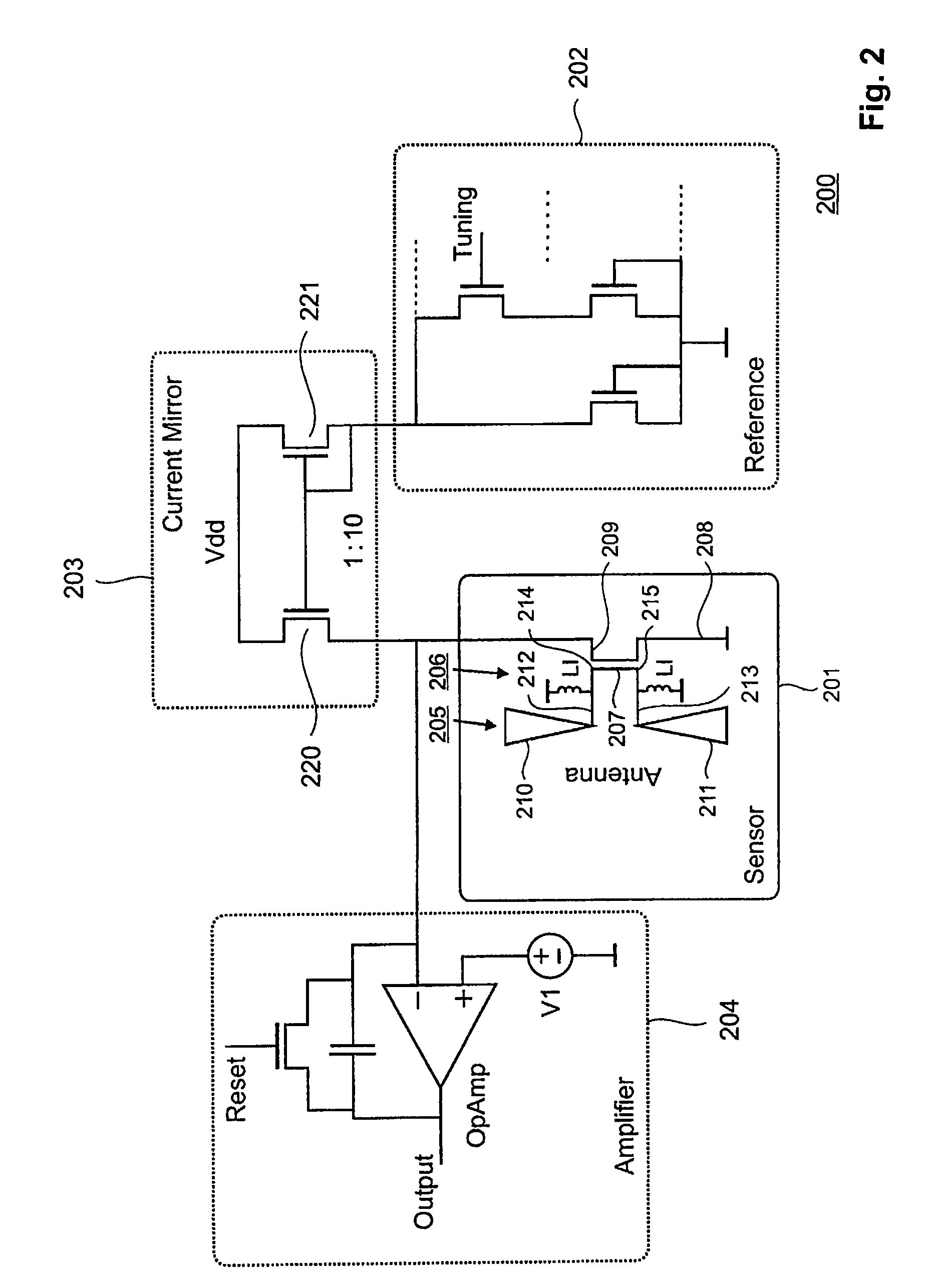Wide-band antenna coupled spectrometer using CMOS transistor
a spectrometer and wide-band technology, applied in the field of cmos spectrometers, can solve the problems of often affected wavelength accuracy and difficult broad band sensitivity of spectrometers, and achieve the effect of inexpensive contact possibilities for antennas
- Summary
- Abstract
- Description
- Claims
- Application Information
AI Technical Summary
Benefits of technology
Problems solved by technology
Method used
Image
Examples
Embodiment Construction
[0029]FIG. 1 shows a schematic illustration of a detector 100 for detecting electromagnetic waves 150 according to an embodiment of the present invention. The detector 100 is in particular suitable for detecting electromagnetic waves 150 with a frequency in the THz range. The detector 100 comprises an antenna 101 for receiving the electromagnetic waves 150. The antenna 101 can be e.g. a planar broadband antenna with a ground plane. The antenna 101 is in particular suited to receive electromagnetic waves in a wavelength range between 3 μm and 15 μm. The antenna 101 comprises a first arm 102a and a second arm 102b. The first arm 102a is connected by means of a first via 103a to a first termination point 104a and the second arm 102b is connected by means of a second via 103b to a second termination point 104b. The first termination point 104a and the second termination point 104b are contact points for contacting a gate 106 of a Field Effect Transistor (FET) 105. Thus the gate 106 of t...
PUM
| Property | Measurement | Unit |
|---|---|---|
| wavelength range | aaaaa | aaaaa |
| wavelength range | aaaaa | aaaaa |
| wavelength range | aaaaa | aaaaa |
Abstract
Description
Claims
Application Information
 Login to View More
Login to View More - R&D
- Intellectual Property
- Life Sciences
- Materials
- Tech Scout
- Unparalleled Data Quality
- Higher Quality Content
- 60% Fewer Hallucinations
Browse by: Latest US Patents, China's latest patents, Technical Efficacy Thesaurus, Application Domain, Technology Topic, Popular Technical Reports.
© 2025 PatSnap. All rights reserved.Legal|Privacy policy|Modern Slavery Act Transparency Statement|Sitemap|About US| Contact US: help@patsnap.com



